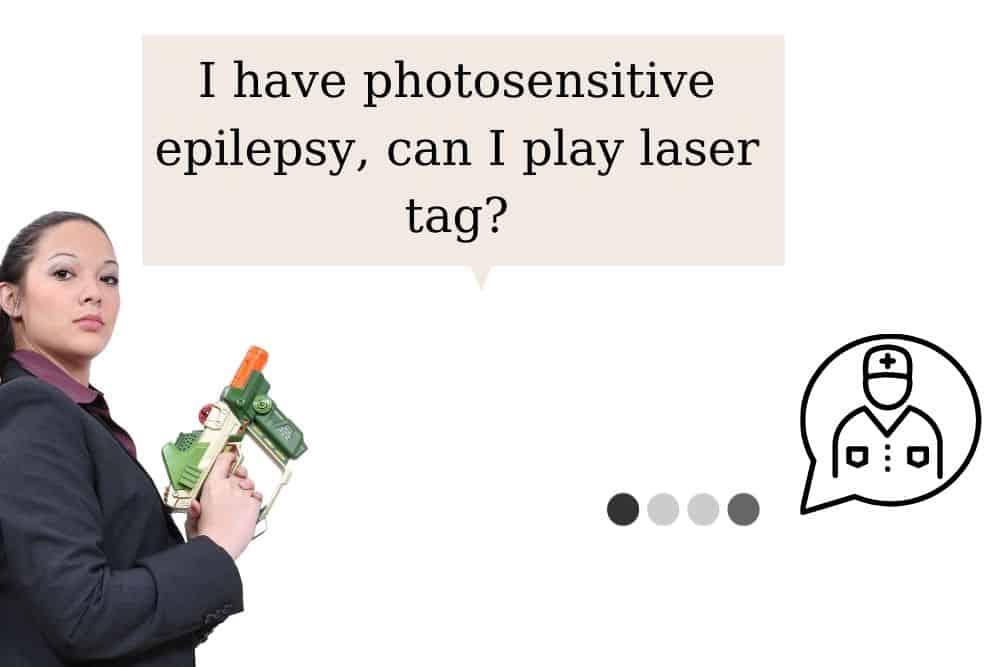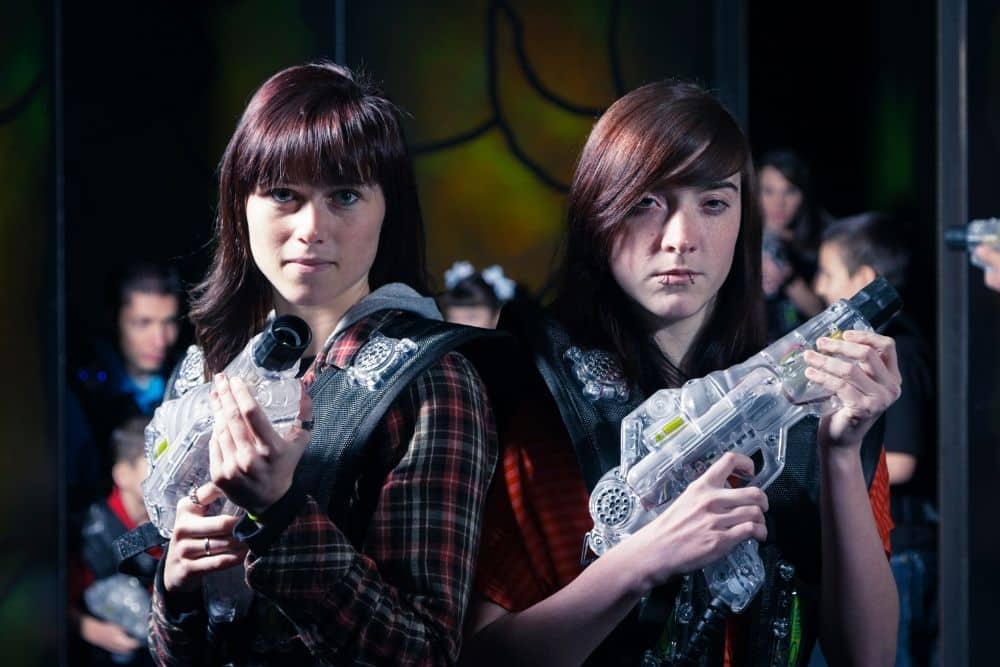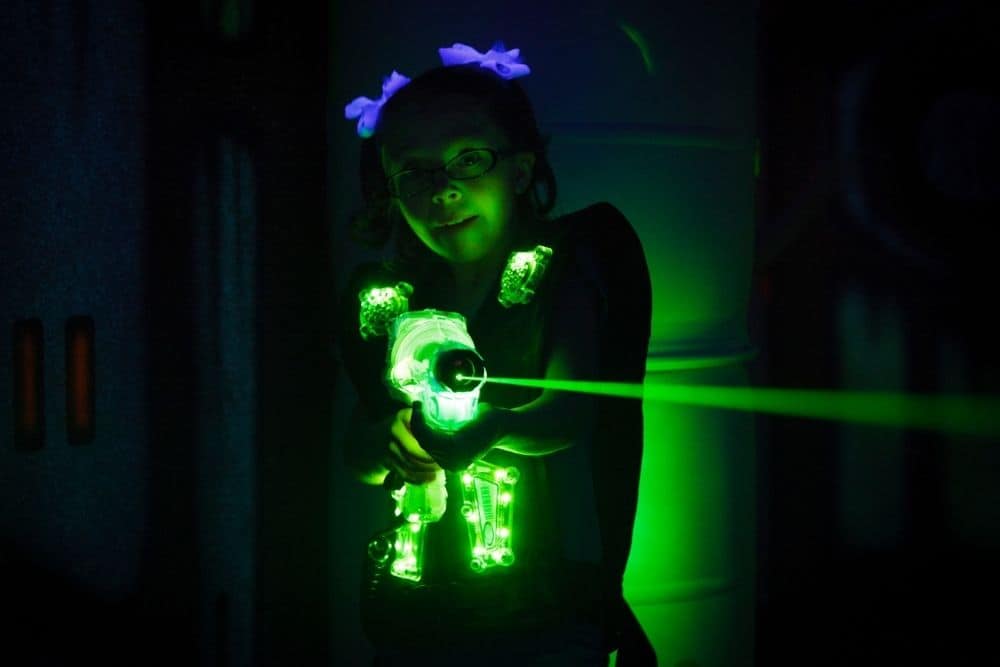We all love fun, but we also love to be safe. Individuals who have epilepsy that is interested in playing laser tag should proceed with caution.
To start, this only applied to people with photosensitive epilepsy, which makes up about 3% of the epilepsy population. It’s rare, but it can be serious. Flashing lights and visual patterns can trigger seizures in people with photosensitive epilepsy, which is why laser tag may be dangerous.

Let’s break down what kind of lights and lasers you may encounter at a laser tag establishment, and how they may affect people with photosensitive epilepsy.
Contents
Can laser lights cause seizures?
Laser tag gun light beams aren’t the only lasers you will encounter when playing laser tag. To add plenty of ambiances, many places put strobe lights into their laser tag arenas.
If you’re not worried about photosensitivity, then no, you should probably be absolutely fine playing laser tag. However, strobe lights are a big trigger for photosensitive epileptics, and other flashing lights in the arena would also be triggering.
If you have epilepsy and have a good understanding of how your disorder works, talk to the staff of the laser tag arena and get a good idea of what kind of lights/light shows they have. The Epilepsy Foundation strongly recommends avoiding all strobe lights if you suffer from photosensitivity.
How can I play safely if I’m worried about seizures?
 Many laser tag establishments recommend playing with a buddy that can keep an eye out on you while playing. The buddy should understand what to look out for to act quickly if you begin to get triggered. They should also know how to tend to you if you do have a seizure.
Many laser tag establishments recommend playing with a buddy that can keep an eye out on you while playing. The buddy should understand what to look out for to act quickly if you begin to get triggered. They should also know how to tend to you if you do have a seizure.
Other laser tag establishments just ask that you tell them about your epilepsy before playing so they know to keep an eye on you. While some just won’t let photosensitive epileptics play at all.
At the end of the day though, whether a venue lets you play is irrelevant. You are responsible for your own health so talk to your doctor and only play indoors if you are sure you will be able to do so.
Taking care of someone with a seizure is relatively simple. The CDC recommends staying with the person until they are fully away, turn them on their side, put something soft underneath their head for support, remove their glasses, and make sure that they can breathe well during and after their seizure but remove any tight jewelry or clothing around their neck.
What kind of lasers does laser tag use?
 Laser tag guns use invisible infrared lights to communicate with other guns and vests. Although most laser tag guns shoot a red beam from them, it’s more to help players with aim than anything functional.
Laser tag guns use invisible infrared lights to communicate with other guns and vests. Although most laser tag guns shoot a red beam from them, it’s more to help players with aim than anything functional.
Infrared lights are incredibly common; if they caused seizures, lots of people would be in big trouble. Television remote controls are a great example of infrared lights in day-to-day life; much like a laser tag gun and vest, the remote control communicates with the TV with the invisible light waves.
Contrary to popular belief, there are no real lasers in laser tag, so shouldn’t be harmful if accidentally pointed in your eye.
To sum things up, there is nothing dangerous about laser tag guns for epileptics, it’s really the arena that could be triggering!
What about playing outside and during the day?
This is a great way for epileptics to enjoy laser tag safety. When you play laser tag during the day and outdoors, there are no flashing lights.
An onlooker would see people running around with plastic guns, shooting, and then maybe hearing a sound effect of two. Not only is playing outdoors during the day safe, but it’s also super convenient.
There is plenty of great at-home laser tag equipment on the market to give players the full experience in the comfort of their own backyard.
Our favorite laser tag gun set is the ArmoGear Laser Tag Guns with Vests . It has fantastic reviews and is also kid-friendly!
Can you play video games if you have epilepsy?
Screens can be triggers for individuals with photosensitive epilepsy. Video games can be particularly triggering because of all the flashing animation often used for those games.
But fear not, you can play video games safely with epilepsy! The Epilepsy Foundation recommends that photosensitive epileptics are at least two feet away from their screen when playing. The room should also be well lit and the brightness on the screen should be relatively low.
When playing, take regular breaks and don’t blink a lot when looking at the screen since that will intensify any flashing lights and may trigger a seizure. The foundation also recommends covering one eye while playing and switching the eye regularly.
You also shouldn’t play when tired, and you should especially keep children away from video games if they are fatigued.
Other digital screens like televisions and computers should also be used mindfully and their settings should be adjusted to limit any flickering or flashing. Another great tip is to turn off autoplay on social media so you aren’t bombarded with moving images while scrolling.
This may sound like a lot to remember, but your health is your wealth, so it’s worth it.
Take Care and Have Fun
Finally, you can play laser tag if you have epilepsy, as long as you play in the correct environment. Once again, playing outdoors and in full daylight is an awesome way to have fun and not have to worry about any potential seizure triggers. We recommend you give it a go.
Laser tag is for everyone. It’s a great way to socialize, move around, and even win!
Do you have photosensitive epilepsy? Do you know anyone who does? Let us know your experience with laser tag! We would love to hear how you make it work!
Have fun and stay safe!